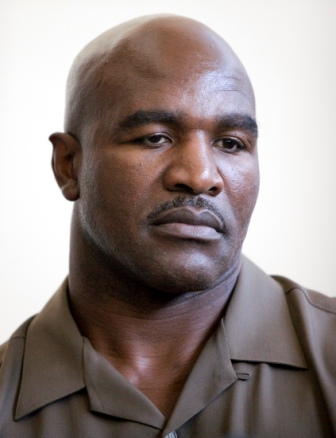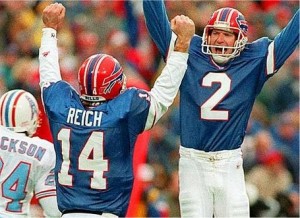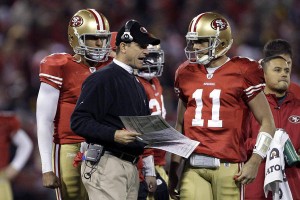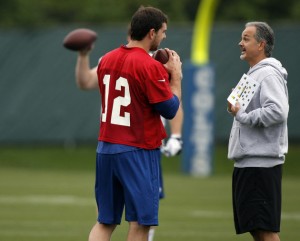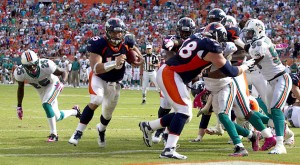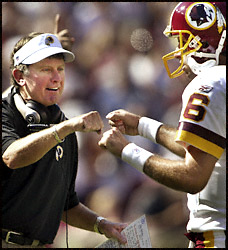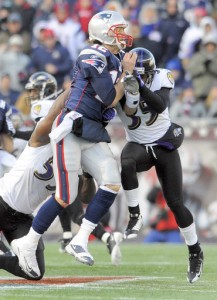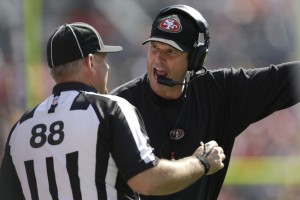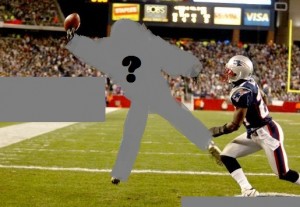Like everyone else, the SRS now has Alabama atop its standings. Here are the full SRS ratings after five weeks [1]Note that I called the Oregon-Washington State game when Oregon was up 51-19 late in the 4th quarter.
| Rk | Team | Conf | G | MOV | SOS | SRS | REC |
|---|---|---|---|---|---|---|---|
| 1 | Alabama | SEC | 5 | 27.2 | 37.3 | 64.5 | 5-0 |
| 2 | Texas | B12 | 4 | 22.3 | 41.2 | 63.4 | 4-0 |
| 3 | Texas Tech | B12 | 4 | 27.3 | 35.7 | 62.9 | 4-0 |
| 4 | Texas A&M | SEC | 4 | 25.5 | 35.5 | 61 | 3-1 |
| 5 | South Carolina | SEC | 5 | 22.1 | 38.8 | 60.9 | 5-0 |
| 6 | Georgia | SEC | 5 | 22.3 | 36.8 | 59.1 | 5-0 |
| 7 | Florida | SEC | 4 | 16.6 | 42.2 | 58.9 | 4-0 |
| 8 | Oregon | P12 | 5 | 26.4 | 29.9 | 56.3 | 5-0 |
| 9 | Notre Dame | IND | 4 | 14.8 | 41.5 | 56.2 | 4-0 |
| 10 | West Virginia | B12 | 4 | 17.3 | 38.9 | 56.1 | 4-0 |
| 11 | Arizona St | P12 | 5 | 19.3 | 36.1 | 55.4 | 4-1 |
| 12 | Kansas St | B12 | 4 | 20.1 | 34.9 | 55 | 4-0 |
| 13 | Florida St | ACC | 5 | 28.6 | 25.5 | 54.1 | 5-0 |
| 14 | Baylor | B12 | 4 | 12.8 | 41 | 53.7 | 3-1 |
| 15 | Purdue | B10 | 4 | 17 | 36.2 | 53.2 | 3-1 |
| 16 | LSU | SEC | 5 | 21.7 | 31.4 | 53.1 | 5-0 |
| 17 | Oregon St | P12 | 3 | 5.7 | 47.3 | 52.9 | 3-0 |
| 18 | Oklahoma St | B12 | 4 | 14.4 | 37 | 51.3 | 2-2 |
| 19 | Oklahoma | B12 | 3 | 16.8 | 33.9 | 50.8 | 2-1 |
| 20 | Clemson | ACC | 5 | 12.9 | 37.4 | 50.3 | 4-1 |
| 21 | UCLA | P12 | 5 | 15.3 | 34.5 | 49.8 | 4-1 |
| 22 | Ohio State | B10 | 5 | 14.1 | 35.7 | 49.8 | 5-0 |
| 23 | Stanford | P12 | 4 | 7.3 | 42.5 | 49.7 | 3-1 |
| 24 | Missouri | SEC | 5 | 1.9 | 46.8 | 48.7 | 3-2 |
| 25 | Iowa St | B12 | 4 | 8.1 | 40.4 | 48.5 | 3-1 |
| 26 | Southern Cal | P12 | 4 | 12.8 | 35.7 | 48.4 | 3-1 |
| 27 | Arizona | P12 | 5 | 4.3 | 43.3 | 47.6 | 3-2 |
| 28 | Nebraska | B10 | 5 | 17.3 | 30 | 47.3 | 4-1 |
| 29 | San José St | WAC | 5 | 13.1 | 32.5 | 45.6 | 4-1 |
| 30 | North Carolina | ACC | 5 | 19.2 | 26.4 | 45.6 | 3-2 |
| 31 | Northwestern | B10 | 5 | 11.8 | 33.7 | 45.5 | 5-0 |
| 32 | Fresno St | MWC | 5 | 11.4 | 34 | 45.4 | 3-2 |
| 33 | Mississippi St | SEC | 4 | 18.8 | 26.1 | 44.8 | 4-0 |
| 34 | Utah St | WAC | 5 | 13.4 | 31.4 | 44.8 | 4-1 |
| 35 | Brigham Young | IND | 5 | 16.3 | 28.4 | 44.7 | 3-2 |
| 36 | Mississippi | SEC | 5 | 4 | 40.5 | 44.5 | 3-2 |
| 37 | Louisiana-Monroe | Sun | 4 | 9.8 | 34.7 | 44.5 | 2-2 |
| 38 | Wisconsin | B10 | 5 | 3 | 41.4 | 44.4 | 3-2 |
| 39 | TCU | B12 | 4 | 20.9 | 23.6 | 44.4 | 4-0 |
| 40 | Michigan | B10 | 4 | 2.5 | 41.7 | 44.2 | 2-2 |
| 41 | Nevada | MWC | 5 | 12.6 | 30.9 | 43.5 | 4-1 |
| 42 | Michigan St | B10 | 5 | 4.7 | 38.6 | 43.3 | 3-2 |
| 43 | Louisiana Tech | WAC | 4 | 15.6 | 27.6 | 43.2 | 4-0 |
| 44 | Tulsa | CUS | 5 | 12.3 | 30.6 | 42.9 | 4-1 |
| 45 | Tennessee | SEC | 5 | 6.9 | 36 | 42.9 | 3-2 |
| 46 | Boise St | MWC | 4 | 6 | 36.6 | 42.6 | 3-1 |
| 47 | Washington | P12 | 4 | 3.6 | 38.8 | 42.4 | 3-1 |
| 48 | Central Florida | CUS | 4 | 6.1 | 36.2 | 42.4 | 2-2 |
| 49 | Louisville | BgE | 5 | 12.7 | 29.6 | 42.3 | 5-0 |
| 50 | Miami FL | ACC | 5 | 4.5 | 37.5 | 42 | 4-1 |
| 51 | Penn State | B10 | 5 | 9.3 | 31.7 | 41 | 3-2 |
| 52 | Auburn | SEC | 4 | -7.3 | 48.2 | 40.9 | 1-3 |
| 53 | Western Kentucky | Sun | 5 | 9.4 | 31.4 | 40.8 | 4-1 |
| 54 | Rutgers | BgE | 4 | 15.8 | 24.3 | 40.1 | 4-0 |
| 55 | North Carolina St | ACC | 5 | 7.3 | 32.6 | 39.9 | 3-2 |
| 56 | Louisiana-Lafayette | Sun | 4 | 10 | 29.9 | 39.9 | 3-1 |
| 57 | Vanderbilt | SEC | 4 | -1.9 | 41.7 | 39.8 | 1-3 |
| 58 | Cincinnati | BgE | 3 | 13.7 | 26.1 | 39.8 | 3-0 |
| 59 | Middle Tennessee St | Sun | 4 | 11.8 | 27.8 | 39.5 | 3-1 |
| 60 | Ohio U. | MAC | 5 | 15.7 | 23.7 | 39.4 | 5-0 |
| 61 | Toledo | MAC | 5 | 7.8 | 31.3 | 39.1 | 4-1 |
| 62 | Utah | P12 | 4 | -0.4 | 39.1 | 38.7 | 2-2 |
| 63 | Minnesota | B10 | 5 | 7 | 31.5 | 38.5 | 4-1 |
| 64 | California | P12 | 5 | -5.8 | 44.2 | 38.4 | 1-4 |
| 65 | Iowa | B10 | 5 | 3.2 | 34.8 | 38 | 3-2 |
| 66 | Troy | Sun | 5 | 4.4 | 33.4 | 37.8 | 3-2 |
| 67 | Kentucky | SEC | 5 | -9.7 | 47.4 | 37.7 | 1-4 |
| 68 | South Florida | BgE | 5 | -2.2 | 39.2 | 37 | 2-3 |
| 69 | Maryland | ACC | 4 | -0.5 | 37.5 | 37 | 2-2 |
| 70 | Temple | BgE | 3 | 2 | 34.9 | 36.9 | 1-2 |
| 71 | San Diego St | MWC | 5 | 2.4 | 34.4 | 36.8 | 2-3 |
| 72 | Georgia Tech | ACC | 5 | 6.8 | 29.6 | 36.4 | 2-3 |
| 73 | Ball St | MAC | 5 | 0 | 36.3 | 36.3 | 3-2 |
| 74 | SMU | CUS | 4 | -9.6 | 45.9 | 36.3 | 1-3 |
| 75 | East Carolina | CUS | 5 | -1.7 | 37.9 | 36.2 | 3-2 |
| 76 | Northern Illinois | MAC | 5 | 11.5 | 24.4 | 35.9 | 4-1 |
| 77 | Boston College | ACC | 4 | -2.5 | 38.1 | 35.6 | 1-3 |
| 78 | Indiana | B10 | 4 | 5.3 | 30.1 | 35.4 | 2-2 |
| 79 | New Mexico | MWC | 5 | -3.8 | 39.1 | 35.3 | 2-3 |
| 80 | Connecticut | BgE | 5 | 5.8 | 29.4 | 35.2 | 3-2 |
| 81 | Marshall | CUS | 5 | -2.1 | 37.1 | 35 | 2-3 |
| 82 | Syracuse | BgE | 4 | -4.8 | 39.3 | 34.6 | 1-3 |
| 83 | Kent St | MAC | 4 | 2.3 | 32.1 | 34.4 | 3-1 |
| 84 | Virginia Tech | ACC | 5 | 7 | 27.3 | 34.3 | 3-2 |
| 85 | Wyoming | MWC | 4 | -6 | 39.6 | 33.6 | 1-3 |
| 86 | Duke | ACC | 5 | 9.6 | 23.9 | 33.5 | 4-1 |
| 87 | Air Force | MWC | 4 | 8.9 | 24.4 | 33.3 | 2-2 |
| 88 | Texas St-San Marcos | WAC | 4 | -6.6 | 39.9 | 33.3 | 2-2 |
| 89 | Alabama-Birmingham | CUS | 4 | -16.5 | 47.8 | 31.3 | 0-4 |
| 90 | UTEP | CUS | 5 | -8 | 39 | 31 | 1-4 |
| 91 | North Texas | Sun | 5 | -2.4 | 33.4 | 31 | 2-3 |
| 92 | Virginia | ACC | 5 | -6.7 | 37.5 | 30.8 | 2-3 |
| 93 | Western Michigan | MAC | 5 | -2.2 | 32.9 | 30.7 | 2-3 |
| 94 | Pittsburgh | BgE | 4 | 2.5 | 28.2 | 30.7 | 2-2 |
| 95 | Arkansas | SEC | 5 | -14.2 | 44.5 | 30.3 | 1-4 |
| 96 | Houston | CUS | 4 | -8.8 | 37.7 | 29 | 1-3 |
| 97 | Kansas | B12 | 4 | -5 | 33.9 | 28.9 | 1-3 |
| 98 | Arkansas St | Sun | 5 | -3.1 | 30.6 | 27.5 | 2-3 |
| 99 | Bowling Green | MAC | 5 | -2.1 | 29.4 | 27.3 | 2-3 |
| 100 | Florida Atlantic | Sun | 5 | -13.7 | 40.1 | 26.4 | 1-4 |
| 101 | Buffalo | MAC | 4 | -6.5 | 32.9 | 26.4 | 1-3 |
| 102 | Illinois | B10 | 5 | -6.9 | 32.9 | 26 | 2-3 |
| 103 | Washington St | P12 | 5 | -9 | 34.4 | 25.4 | 2-3 |
| 104 | UNLV | MWC | 5 | -8.8 | 34.2 | 25.4 | 1-4 |
| 105 | Navy | IND | 4 | -10.4 | 35.6 | 25.3 | 1-3 |
| 106 | Southern Miss | CUS | 4 | -16.8 | 41.6 | 24.9 | 0-4 |
| 107 | Texas-San Antonio | WAC | 5 | 20.3 | 4.5 | 24.8 | 5-0 |
| 108 | Colorado St | MWC | 5 | -12.2 | 36.8 | 24.6 | 1-4 |
| 109 | Rice | CUS | 5 | -12.6 | 37.2 | 24.6 | 1-4 |
| 110 | Eastern Michigan | MAC | 4 | -17.6 | 42 | 24.4 | 0-4 |
| 111 | Wake Forest | ACC | 5 | -7.5 | 31.5 | 24 | 3-2 |
| 112 | Florida Int'l | Sun | 5 | -12.3 | 36.1 | 23.8 | 1-4 |
| 113 | Miami OH | MAC | 5 | -5.3 | 28.3 | 23 | 3-2 |
| 114 | Akron | MAC | 5 | -4.4 | 27 | 22.6 | 1-4 |
| 115 | Central Michigan | MAC | 4 | -10.4 | 30.4 | 20 | 2-2 |
| 116 | Hawai`i | MWC | 4 | -15.9 | 35.8 | 20 | 1-3 |
| 117 | South Alabama | Sun | 5 | -12.4 | 32.2 | 19.8 | 1-4 |
| 118 | New Mexico St | WAC | 5 | -9.7 | 28.8 | 19.1 | 1-4 |
| 119 | Colorado | P12 | 5 | -13.1 | 31.8 | 18.7 | 1-4 |
| 120 | Memphis | CUS | 4 | -14 | 30.5 | 16.5 | 0-4 |
| 121 | Idaho | WAC | 5 | -22.5 | 37.3 | 14.8 | 0-5 |
| 122 | Tulane | CUS | 4 | -29 | 43 | 14 | 0-4 |
| 123 | Army | IND | 4 | -16.8 | 30.4 | 13.6 | 0-4 |
| 124 | Massachusetts | MAC | 5 | -22.5 | 35.4 | 12.9 | 0-5 |
References
| ↑1 | Note that I called the Oregon-Washington State game when Oregon was up 51-19 late in the 4th quarter. |
|---|


